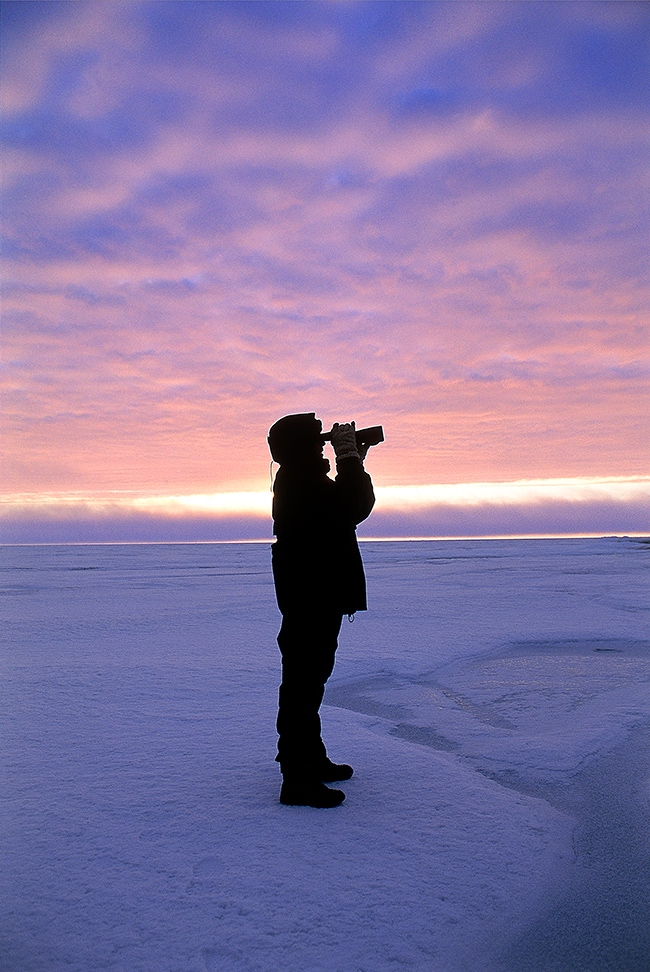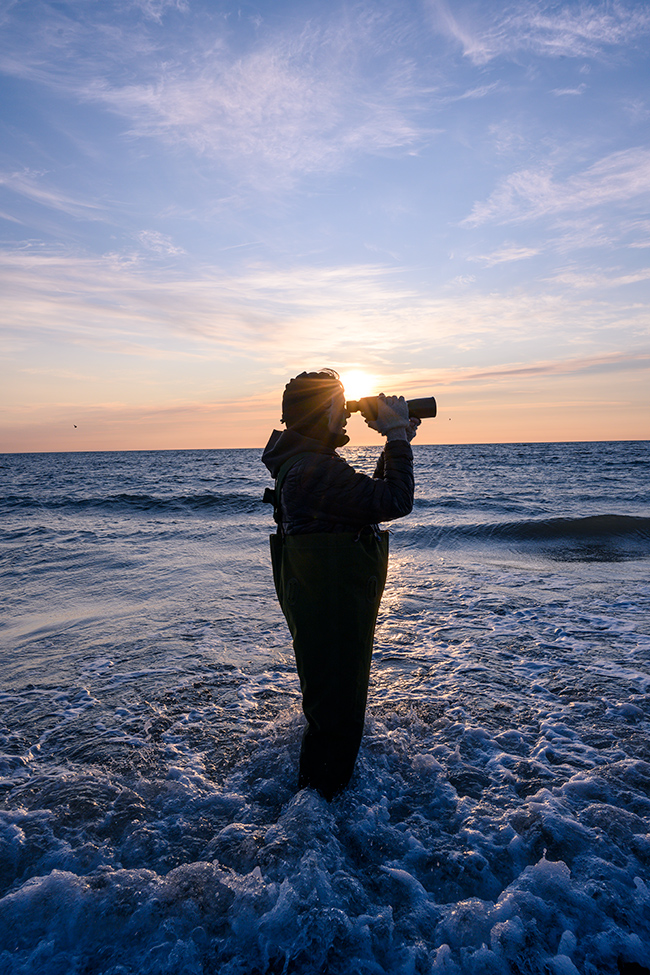With a Compelling Story to Tell, Joe McNally Turns to the Z 6 Filmmaker's Kit
Eyewitness: "The arctic is melting." - Joe McNally documents the changing environment experienced by research scientist George Divoky on Cooper Island, in the Arctic.
It took Joe McNally 18 years to get back to Cooper Island. He first came to the remote barrier island off the north coast of Alaska to take photographs for a New York Times Sunday magazine story.
The reason for his return was so compelling that he brought along a video crew to make a documentary film—and a behind-the-scenes video about the making of that documentary.
If you've watched the videos, you know the reason.
You also know that George Divoky, a research scientist who's studied the Black Guillemots of Cooper Island for more than 40 years, is an eyewitness to the undeniable fact of environmental change. And you know that Joe came to take a definitive, proof-positive still image of that change, an image that would be a companion and comparison to the photo he took 18 years ago that appeared on the cover of the Times Sunday magazine on January 6, 2002.
"I was simply a photojournalist trying to do a good job," Joe says of his 2001 assignment. He submitted his photos to the Times and moved on to the next job—but he stayed in touch with George. "We got to be friends over time. We talked on the phone, and I'd get to Seattle from time to time and would visit with him."
Back in 2001 no one could have predicted that the ice George was standing on would be gone so quickly. "All the computer models or predictions said there'd be a slow erosion," Joe says. "Well, it hasn't been particularly slow; it's been faster than anyone expected. A few years ago George said that if he stood on the spot where we made the picture, he'd be literally standing in water. I thought, Well, that would be an interesting comparison picture."
In June, 2001, Joe McNally photographed George Divoky on 400 miles of sea ice at Cooper Island, Alaska.
Joe photographed George in the same spot in July, 2019.
"One of Those Photographs"
At the time he took the photo, Joe didn't know what it would signify with the passing of time, but he realized it was important to him.
"Every photographer accumulates a very small body of work that could be considered significant," he says. "The work I did after 9-11 [Faces of Ground Zero] is considered significant. Certain covers perhaps; some photographs in National Geographic. That New York Times Sunday magazine cover and the article brought George recognition wider than the science people; it brought him to national attention. And if I had to label 20 significant photographs I might have done in the course of my career—that would be ambitious to get to the number 20, but let's just say that—this would probably be amongst them."
Three days on Cooper Island: - Behind the scenes of Joe McNally's video documentary.
The Creative Kit
The aim of Joe's return to Cooper Island was more than the still image, of course. It was a documentary video, and the Z 6 Filmmaker's Kit would make it a practical goal for Joe and his five-person crew.
"This was a serious test for the Z 6," Joe says. "The conditions were not extreme, but certainly 'unfriendly,' starting with getting bounced around in airplanes and boats, and those conditions proved out the rugged nature of the camera and the Nikon glass. But the overall appeal was that hand-holdable, affordable gear produced a very high-quality video. The simplicity, lightness, durability and excellence of the gear really made our efforts possible."
The Z 6 Filmmaker's Kit includes the Z 6 camera, the NIKKOR Z 24-70mm f/4 S lens, a Mount Adapter FTZ, a hand-held camera stabilizer, a shotgun mic and a 4K recording monitor. You can see all the components here.
Keep In Mind
-
If you have a video in mind, first have a story line and a plan. Joe knew the general premise and the progress of his story, and he had ideas for the narration. "There were key things I knew we had to have...things to cover in the narrative."
-
One of the factors Joe stresses when talking about the Cooper Island video is the importance of quality sound. "You can't do a high-level film like this without it," he says. "You have to have multiple tracks running with professional audio. Sound is incredibly crucial; it's said that if you don't have audio, you don't have the video."
-
Allow creative freedom. "As the director, I knew what I wanted and needed, and I planned that out. I was looking into the monitors to be sure I got the things I insisted on, but after that I was very much a hands-off guy. I had a crew that knew what they were doing, and I let them shoot."
-
Know your gear. No matter what story you want to tell, no matter where you'll be shooting, no matter if you're the director, the cameraperson or both, the time to get to know the tools and techniques is before the shoot.








